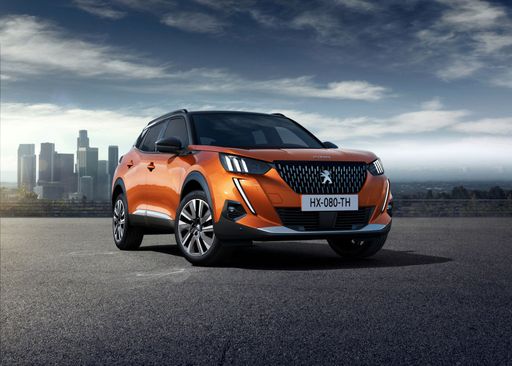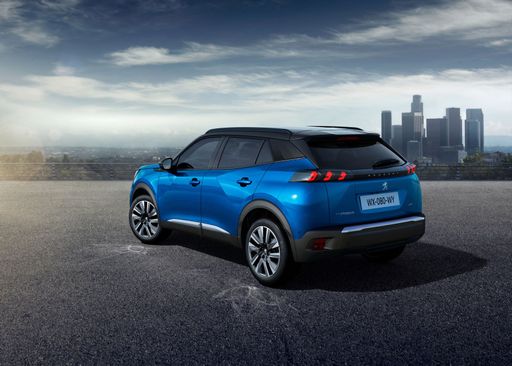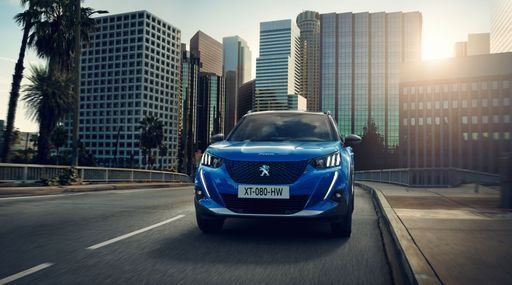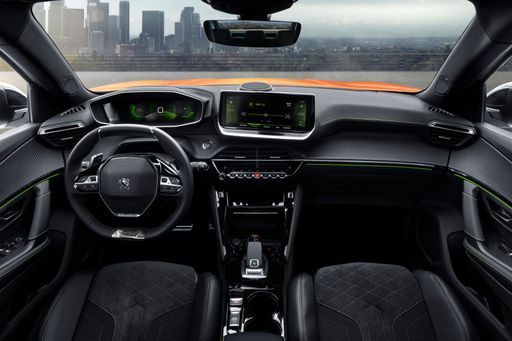Nissan Interstar VS Peugeot 2008 – Specs, Efficiency & Price Comparison
Which model is the better choice – the Nissan Interstar or the Peugeot 2008? We compare performance (170 HP vs 156 HP), boot capacity ( vs 434 L), efficiency (7.40 L vs 15.50 kWh5 L), and of course, the price (34900 £ vs 23800 £).
Find out now which car fits your needs better!
The Nissan Interstar (Cargo Van) is powered by a Diesel or Electric engine and comes with a Manuel or Automatic transmission. In comparison, the Peugeot 2008 (SUV) features a Petrol, Electric or Petrol MHEV engine and a Manuel or Automatic gearbox.
When it comes to boot capacity, the Nissan Interstar offers , while the Peugeot 2008 provides 434 L – depending on what matters most to you. If you’re looking for more power, you’ll need to decide whether the 170 HP of the Nissan Interstar or the 156 HP of the Peugeot 2008 suits your needs better.
There are also differences in efficiency: 7.40 L vs 15.50 kWh5 L. In terms of price, the Nissan Interstar starts at 34900 £, while the Peugeot 2008 is available from 23800 £.
Compare all the key specs now and find out which model fits your lifestyle best!
Nissan Interstar
The Nissan Interstar is a versatile van that expertly combines practicality with modern design. It offers a spacious interior that caters to both cargo and passenger needs, making it ideal for businesses and families alike. With its robust performance and efficient fuel consumption, the Interstar stands out as a reliable choice in the commercial vehicle market.
detailsPeugeot 2008
The Peugeot 2008 stands out in the compact SUV market with its blend of striking design and practical functionality. It offers a comfortable ride with a sophisticated interior that exudes quality, making it ideal for both urban commutes and longer journeys. The model's efficient performance and range of modern features further enhance its appeal to a diverse range of drivers.
details @ media.stellantis.com
@ media.stellantis.com
 @ media.stellantis.com
@ media.stellantis.com
 @ media.stellantis.com
@ media.stellantis.com
 @ media.stellantis.com
@ media.stellantis.com

|
|
|
|
|
Costs and Consumption |
|
|---|---|
|
Price
34900 - 55600 £
|
Price
23800 - 38300 £
|
|
Consumption L/100km
7.4 - 7.5 L
|
Consumption L/100km
5 - 6.2 L
|
|
Consumption kWh/100km
-
|
Consumption kWh/100km
15.50 kWh
|
|
Electric Range
175 - 410 km
|
Electric Range
406 km
|
|
Battery Capacity
-
|
Battery Capacity
51 kWh
|
|
co2
0 - 195 g/km
|
co2
0 - 140 g/km
|
|
Fuel tank capacity
80 L
|
Fuel tank capacity
44 L
|
Dimensions and Body |
|
|---|---|
|
Body Type
Cargo Van
|
Body Type
SUV
|
|
Seats
3 - 7
|
Seats
5
|
|
Doors
4
|
Doors
5
|
|
Curb weight
2053 - 2535 kg
|
Curb weight
1263 - 1623 kg
|
|
Trunk capacity
-
|
Trunk capacity
434 L
|
|
Length
5680 - 6315 mm
|
Length
4304 mm
|
|
Width
2080 mm
|
Width
1770 mm
|
|
Height
2498 - 2756 mm
|
Height
1523 mm
|
|
Payload
965 - 1447 kg
|
Payload
407 - 460 kg
|
Engine and Performance |
|
|---|---|
|
Engine Type
Diesel, Electric
|
Engine Type
Petrol, Electric, Petrol MHEV
|
|
Transmission
Manuel, Automatic
|
Transmission
Manuel, Automatic
|
|
Transmission Detail
Schaltgetriebe, Automatikgetriebe
|
Transmission Detail
Schaltgetriebe, Automatikgetriebe, Automat. Schaltgetriebe (Doppelkupplung)
|
|
Drive Type
Front-Wheel Drive
|
Drive Type
Front-Wheel Drive
|
|
Power HP
105 - 170 HP
|
Power HP
101 - 156 HP
|
|
Acceleration 0-100km/h
-
|
Acceleration 0-100km/h
8.3 - 10.9 s
|
|
Max Speed
115 - 177 km/h
|
Max Speed
150 - 206 km/h
|
|
Torque
300 - 380 Nm
|
Torque
205 - 270 Nm
|
|
Number of Cylinders
4
|
Number of Cylinders
3
|
|
Power kW
77 - 125 kW
|
Power kW
74 - 115 kW
|
|
Engine capacity
1997 cm3
|
Engine capacity
1199 cm3
|
General |
|
|---|---|
|
Model Year
2024 - 2025
|
Model Year
2023 - 2025
|
|
CO2 Efficiency Class
G, A
|
CO2 Efficiency Class
D, A, E, C
|
|
Brand
Nissan
|
Brand
Peugeot
|
Nissan Interstar
The Evolution of the Nissan Interstar
The Nissan Interstar has long been a staple in the commercial vehicle sector, known for its robust build and practical design. The latest iterations have further cemented its status with a range of technical enhancements and innovative features aimed at aiding businesses in achieving optimal efficiency. Whether you're navigating city streets or traversing the highways, the Interstar stands out as a reliable workhorse ready to meet various transport needs.
Power and Performance
The current range of Nissan Interstar models boasts diesel engines ranging from 105 to 180 PS, offering a commendable blend of power and fuel efficiency across the board. With a fuel consumption of between 7.4 and 7.5 litres per 100 kilometres, these vehicles are designed to minimise operational costs while maximizing performance.
All models feature four-cylinder engines, with engine displacement between 1997 and 2299 cm³, capable of producing torque figures between 330 and 400 Nm. These specifications ensure that the Interstar offers superior pulling power, which is particularly useful for transporting heavy loads across different terrains.
Transmission and Drive Options
Versatility is at the heart of the Nissan Interstar, with transmission options including both manual and automatic gearboxes. Drivers can also choose between front-wheel and rear-wheel drive configurations, allowing the vehicle to suit specific logistical requirements or personal preferences.
For those seeking simplicity and ease of use in urban environments, the Interstar with its automated gearshift provides a smooth driving experience, reducing driver fatigue and increasing focus on the road ahead.
Dimensions and Load Capacities
The Nissan Interstar is available in various lengths, from 5048 mm to an extensive 6848 mm, catering to diverse commercial needs. With widths ranging from 2070 mm to 2222 mm and heights from 2307 mm to 2808 mm, the Interstar offers multiple configurations to maximise cargo space and accommodate various loads.
With a maximum payload capacity of up to 1451 kg, businesses can rest assured that the Interstar is more than capable of delivering goods efficiently without compromising on safety or comfort.
Innovation and Technological Features
While functionality remains a priority, Nissan has not skimped on technological advancements. Among the innovations included are advanced safety features, such as anti-lock braking systems (ABS), electronic stability control (ESC), and a variety of sensors to assist with parking and reversing.
In terms of driver comfort, the brand offers multiple trim levels with exceptional interior features designed to enhance driver experience during long hauls. Options such as climate control, advanced navigation systems, and modern infotainment setups are available, ensuring that both driver and passenger remain comfortable and connected, regardless of the journey length.
Coachwork and Trim Options
The Interstar line-up provides a range of trim levels and equipment lines, from the entry-level Visia to the high-spec Tekna, catering to different market demands and individual preferences. The selection allows buyers to prioritise features that best suit their operation or driving style.
For example, the N-CONNECTA variant offers an array of added extras, enhancing both connectivity and comfort for drivers who rely on the vehicle as a mobile office.
Conclusion
The Nissan Interstar represents a harmonious blend of power, efficiency, and technological innovation in the large van segment. With its vast array of options and features, the Interstar is undeniably a top choice for businesses looking to invest in a dependable and adaptable commercial vehicle. As the line-up continues to evolve, the Interstar remains poised to meet the growing challenges and demands of the modern logistic landscape.
Peugeot 2008
Introducing the New Peugeot 2008: A Blend of Style and Innovation
The new Peugeot 2008 is a standout vehicle in the compact SUV segment, combining dynamic styling with cutting-edge technology. Known for its versatility and impressive features, the 2008 offers more than just good looks. Let's delve into the technical nuances and innovative aspects that make this model a preferred choice among contemporary SUVs.
Engine Options and Performance
The Peugeot 2008 offers a variety of powertrain options to suit different driving needs. Whether you opt for the petrol Mild-Hybrid engine or the fully electric variant, each version delivers a unique driving experience. The engine range includes 1.2-litre petrol engines boasting up to 156 PS and an electric motor option offering the same power. With CO2 emissions ranging from 0 to 129 g/km and a top speed between 150 km/h to 206 km/h, the 2008 ensures efficiency without compromising on performance.
Advanced Technology and Features
The Peugeot 2008 is packed with innovative technology designed to enhance the driving experience. It includes an advanced infotainment system integrated with cutting-edge connectivity solutions. Drivers can enjoy a seamless connection to their digital life with features like smartphone compatibility, real-time navigation, and a configurable digital driver's display. Additionally, advanced driver-assistance systems provide enhanced safety and convenience, making every drive more reassuring.
Electric Powertrain: Embracing the Future
For eco-conscious drivers, the e-2008 variant offers an impressive electric range of 343 to 406 km, thanks to its efficient 46 to 51 kWh battery. With a consumption of just 15.5 to 15.9 kWh/100km, it stands out as an environmentally friendly option. The smoothness of its automatic transmission ensures a comfortable ride, while instant torque from the electric motor provides a thrilling driving experience.
Design and Practicality
Beyond its performance, the Peugeot 2008 flaunts a contemporary design that is both sporty and elegant. Its compact dimensions (4304 mm length, 1770 mm width, 1523 mm height) are accentuated by a streamlined profile and distinctive full LED headlights. Practicality isn't sacrificed either, with a spacious boot capacity of 434 litres and intelligent layout offering ample space for passengers and cargo.
Customisation and Comfort
The interior of the 2008 is crafted to offer comfort and luxury. With options ranging across different trim levels such as Allure, GT, and Style, customers can tailor their vehicle to their personal taste and requirements. High-quality materials and ergonomic seating ensure both driver and passengers travel in comfort, making even the longest journeys pleasant.
Value for Money
The Peugeot 2008 offers competitive pricing from €27,050 to €44,600, catering to a wide audience. With monthly costs ranging from €956 to €1,049 and an efficient cost per kilometre, it presents significant value for money. Its combination of style, technology, and practicality means it’s more than just a vehicle; it’s a smart investment.
In summary, the Peugeot 2008 stands as a remarkable choice in the SUV market, seamlessly blending style, technology, and efficiency. Whether you prioritise eco-friendliness, driving pleasure, or advanced tech features, the 2008 delivers on all fronts, making it a top contender for modern drivers.
The prices and data displayed are estimates based on German list prices and may vary by country. This information is not legally binding.
